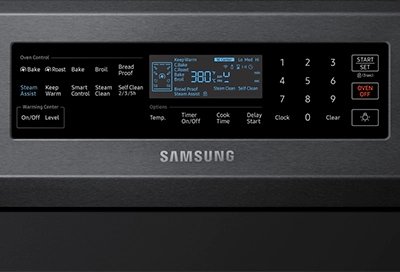
Here’s the deal: the E3 error code on Samsung ovens typically signals a problem with the oven’s temperature sensor. Think of this sensor as the thermostat in your car — it plays a crucial role in ensuring that the oven heats to the correct temperature. If something goes awry with the sensor, the oven can’t accurately tell how hot it’s getting, leading to cooking mishaps. But don’t worry, understanding this code and what to do about it doesn’t require an engineering degree. Let’s dive in!
Understanding the Oven Temperature Sensor
So, let’s break down what this temperature sensor does. Imagine trying to bake a cake without knowing the oven temperature. You’d end up with a soggy mess or a burnt disaster. The temperature sensor prevents this by constantly checking how hot the oven is and giving feedback to regulate the heat to match your settings.
When the sensor isn’t working properly, it’s like trying to follow a GPS with outdated maps — you’re bound to go off course. In the case of the E3 error, the sensor might be sending faulty signals to the control board, indicating the temperature is off. This can happen if the sensor is defective, has loose connections, or has been worn out over time.
To fix this, you’ll need to check the sensor and its connections. But remember, unplug your oven before poking around inside. Safety first! If you’re comfortable with DIY fixes, you can access the sensor by unscrewing the back panel of your oven. If not, it might be time to call in the experts to ensure your oven continues to perform top-notch.
Common Causes of the E3 Error Code
You might be wondering, “Why would the temperature sensor fail in the first place?” Well, a few usual suspects can cause this breakdown. Firstly, normal wear and tear can deteriorate the sensor over years of heating and cooling cycles, much like an old pair of shoes that no longer provide the support they once did.
Another cause can be loose or corroded wiring. Think of it like a bad phone connection — if the wires aren’t firmly connected, the signal can’t get through, leading to miscommunication between the sensor and the control board. If moisture gets in, it can also cause corrosion and disrupt the electrical flow.
Lastly, power surges or electrical issues can fry the sensor, akin to a sudden power outage resetting your Wi-Fi and leaving you temporarily disconnected. If your home experiences frequent electrical hiccups, it could affect your oven’s components, including the sensor.
How to Fix and Prevent the E3 Error
Now, let’s talk solutions. Fixing an E3 error usually involves inspecting or replacing the temperature sensor. If you’re somewhat handy, you can locate the sensor inside the oven. It’s usually a thin metal rod. Make sure all connections are tight and there’s no visible damage. If the sensor is faulty, replacing it is often the best course of action.
However, if you feel out of your depth, contacting a certified technician can save you time and ensure a proper fix. They can also perform a comprehensive check-up to catch any other potential issues before they escalate. Regular maintenance, like checking the oven’s connections and keeping it clean, can help extend its lifespan and avoid similar issues in the future.
So, whether you’re baking cookies or roasting a turkey, keeping your oven in working order will ensure everything comes out perfectly cooked. Next time you see that E3 code, you’ll know just what to do. Happy cooking!